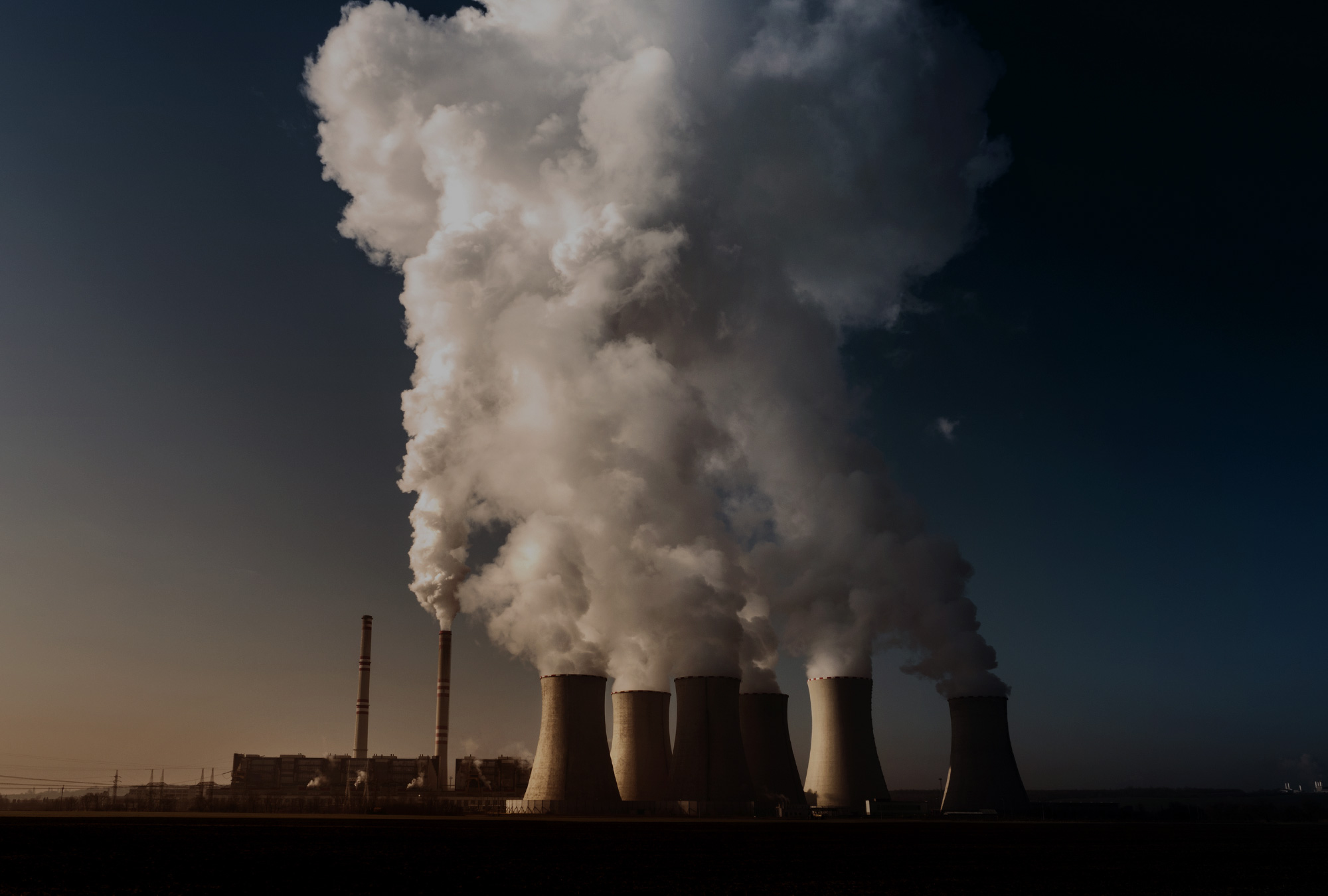Heavy industry
Heavy industry represents 22% of global emissions and is considered one of the most challenging sectors for achieving net zero. Net zero heavy industry can’t be achieved by emissions reductions and clean energy alone — significant innovation in the sector is needed.
Progress Towards Net Zero Industry
Existing heavy industry commitments amount to approximately a 60% reduction in total emissions by 2050, a substantially less-than-net zero ambition.
Heavy industry has much to lose, gain, and contribute in the transition to net zero. New techniques are being developed for high-temperature industrial products such as cement, steel, and petrochemicals, yet more development will be needed for these to be cost-effective. The mining industry will play a crucial role in sourcing the materials needed for a post-carbon transition. The first all-electric mine opened in 2019, paving a pathway for decarbonisation in this sector.
Rapid innovation and scaling of novel manufacturing processes and carbon capture methods will be necessary for heavy industry to achieve net zero emissions.
Case studies for heavy industry
ThyssenKrupp
ThyssenKrupp is one of the world’s largest steel producers, and aims to be climate neutral by 2050, including Scope 1, 2 and 3 emissions. It aims to do this under three pillars of action…
Heidelberg Cement
The second largest cement manufacturer in the world, Heidelberg Cement has pledged to become climate neutral by 2050.
Vale’s Journey to Net Zero
Vale, the largest producer of iron and nickel ore in the world, has committed to carbon neutrality by 2050. Amongst other initiatives, it has…
Key Challenges
Heavy industry faces a number of challenges in contributing towards net zero:
- Heavy industry, and the capital assets it requires, have long lifetimes, meaning that the 2050 target most net zero goals aim for is within one investment cycle for much of the industry, meaning urgent action is required now.
- Heavy industry generally requires extremely high temperatures in its manufacturing and processing. Achieving these temperatures using electricity generated by renewables, rather than by burning fossil fuels, is currently impractical and costly with today’s technologies.
- Many processes in heavy industry, particularly in chemical manufacturing, produce vast amounts of emissions as a by-product of a desired chemical reaction (such as the production of CO2 during the manufacturing of cement). Addressing this requires either a change of process, or capturing the emissions at source during the manufacturing.
- It is difficult from a cost perspective to transition to low-carbon manufacturing technologies and processes when profit margins are so tight. These slim profit margins also reduce the capacity of companies to invest in low and zero carbon technologies in the first place.

An Image of a power station.
Net Zero Innovations for Heavy Industry
Material Efficiency
Producing the same amount of goods using fewer inputs is achievable, but requires new manufacturing techniques and greater collaboration across industries to close manufacturing chains and create material loops. Additionally, with greater optimisation across the industrial process, fewer materials could be needed in the first place.
High-Quality Material Circulation
Recycling must be ramped up in the sector in order to approach net zero. Steel recycling is already happening at a significant level, and will only increase as global scrap metal supplies increase. The same scale and circularity must be introduced into the chemical and plastics industries, closing the ‘societal carbon loop’ and reducing the constant need for fossil fuel inputs for these industries.
New Production Processes
Achieving net zero will require decoupling the production-carbon nexus through novel manufacturing processes. Recent developments in steel manufacturing that switch carbon for hydrogen should be scaled up and similar process changes should be explored in other contexts.
Carbon Capture and Utilisation
Capturing carbon at source will be an integral part of any net zero strategy for heavy industry. Such activity need not be costly, and indeed, there is great potential for carbon valorisation through these processes, such as co-locating algae farms next to cement factories.
Net Zero Policy for Heavy Industry
Achieving net zero in the heavy industry section requires significant policy intervention to create an enabling environment for a low carbon transition. A report commissioned by the European Climate Foundation offers a number of suggestions as to how policy can be utilised to align the development of the European heavy industry sector with the net zero agenda.
Creating an Innovation Framework
Greater governance and oversight is needed to link basic R&D with broader innovation chains, creating a coordinated innovation competition could foster these linkages. Additionally, creating low-regulatory zones could assist in rapidly scaling up low and zero carbon innovations for the sector.
Enhancing the Circular Economy
More precise waste sorting requirements, coupled with higher minimum recycling targets and incorporating circular principles into product design can help decrease waste generation. Additionally, tax incentives can be used to reduce industry wastage, and foster innovation in waste processing, sorting, and refining.
Creating Competitive Low CO2 Markets
This can be achieved through policies that make these options competitive through a price support, minimum standards for the industry in question, using the public procurement model to secure market entry, and the global trade environment.
Managing and Aligning the Joint Energy-Industry Net Zero Transition
Aligning these sectors requires greater collaboration through measures such as a joint task force, joint green power purchase agreements, mapping infrastructure needs, and exploring the possibility of utilising bonds as a financing mechanism.
Scaling Investments and Avoiding Carbon Lock-In
Given the long lifetimes of capital investments in the heavy industry sector, it is crucial that carbon lock-ins are avoided. This could be achieved through measures such as introducing net zero tests in planning applications, fiscal support for low- and zero carbon developments in the sector, and allowing temporary flexibility in permitting to assist in the transition of brownfield sites to low and zero carbon activities.